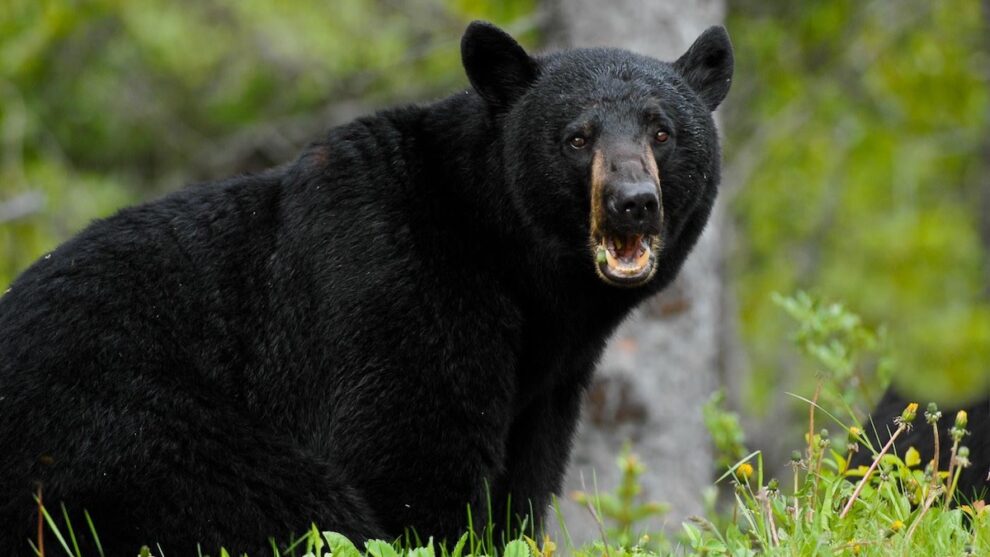The Wisconsin Department of Natural Resources (DNR) today announced preliminary results for the 2023 bear season. The 2023 bear season harvest is well below the recent annual average of approximately 4,000 harvested bears, representing the lowest yearly bear harvest since 2008.
Wisconsin bear hunters harvested 2,922 bears during the 2023 black bear season, a marked decrease from the 4,009 bears taken by hunters last year. This decline was observed across the state, as the bear harvest fell short of respective targets in all management zones.
Similarly, statewide hunter success dropped to 23%, down from the recent 5-year average statewide hunter success rate of 32%. Hunter success rates in individual zones varied from about 60% in Zone A to about 5% in Zones E and F.
“This fall saw a remarkably high acorn crop across much of the state, and this abundance of natural food typically results in reduced hunter success rates as hunters’ baits are less effective,” said Randy Johnson, DNR Large Carnivore Specialist. “Almost all of the anecdotal reports I heard from bear hunters this fall mentioned the incredible abundance of acorns and other natural foods in the woods. It is difficult to predict when these bumper acorn crops will occur, but when they do, the impact on bear hunting is unmistakable.”
Harvest data indicates Zones A and B, in the northern and northeastern parts of the state, were less impacted than other areas, with hunter success rates closer to average at 59% and 50%, respectively. Zone C, located in the central part of the state, fell well short of its harvest target, with below-average hunter success rates as well. Similarly, in the northwestern area of the state, Zone D saw well below-average harvest and hunter-success rates. The drop in Zone D is likely due, at least in part, to recent management actions intended to reduce bear populations in this area, combined with the abundance of natural foods available this fall. Finally, Zones E and F, encompassing most of the state’s southern areas, saw declines in average hunter success rates and total harvest.
Zone-specific preliminary registration information is as follows:
| Zone | Harvest Target | Preliminary Harvest | Percentage of Target Harvested | Licenses Issued | Hunter Success Rate |
| A | 1,075 | 1,028 | 95.6% | 1,730 | 59% |
| B | 850 | 744 | 87.5% | 1,495 | 50% |
| C | 600 | 379 | 63.1% | 3,000 | 13% |
| D | 1,800 | 657 | 36.5% | 4,035 | 16% |
| E | 200 | 96 | 48.0% | 2,000 | 5% |
| F | 50 | 18 | 36.0% | 500 | 4% |
| Statewide Total | 4,575 | 2,922 | 63.8% | 12,760 | 23% |
| *These preliminary data do not include bears taken via agriculture damage tags, the Learn to Hunt program or tribal harvest. | |||||
The 2023 bear season ran from Sept. 6 to Oct. 10. Hunters were awarded 12,760 bear hunting licenses through the license lottery system. Nearly 138,000 people applied for a bear hunting license or preference point for the 2023 season, setting a record for the number of applicants. A full breakdown of the 2023 bear license drawing and license wait times is available on the DNR website.
“Interest in bear hunting continues to grow in Wisconsin and across the nation,” said Johnson. “We encourage hunters to review management zone boundaries, season frameworks and license wait times as they make their hunting plans for the coming years.”
Bear permit applicants must apply at least once during any period of three consecutive years to retain their accumulated preference points; otherwise, all accumulated preference points will be lost.
Hunters wishing to obtain a license or preference point for the 2024 season are encouraged to apply through Go Wild before the Dec. 10 deadline.
Wisconsin has a thriving and expanding bear population, estimated at approximately 25,000 individuals. The resident bear population’s range covers more than half the state, with concentrations in the forested regions of northern and central Wisconsin, with a continued trend of slow southward expansion.
Hunters play an important role in bear management by providing critical data from every harvested bear. This data informs the DNR’s population models to track trends, achieve management objectives and ensure a healthy bear population.
Source : DNR



























